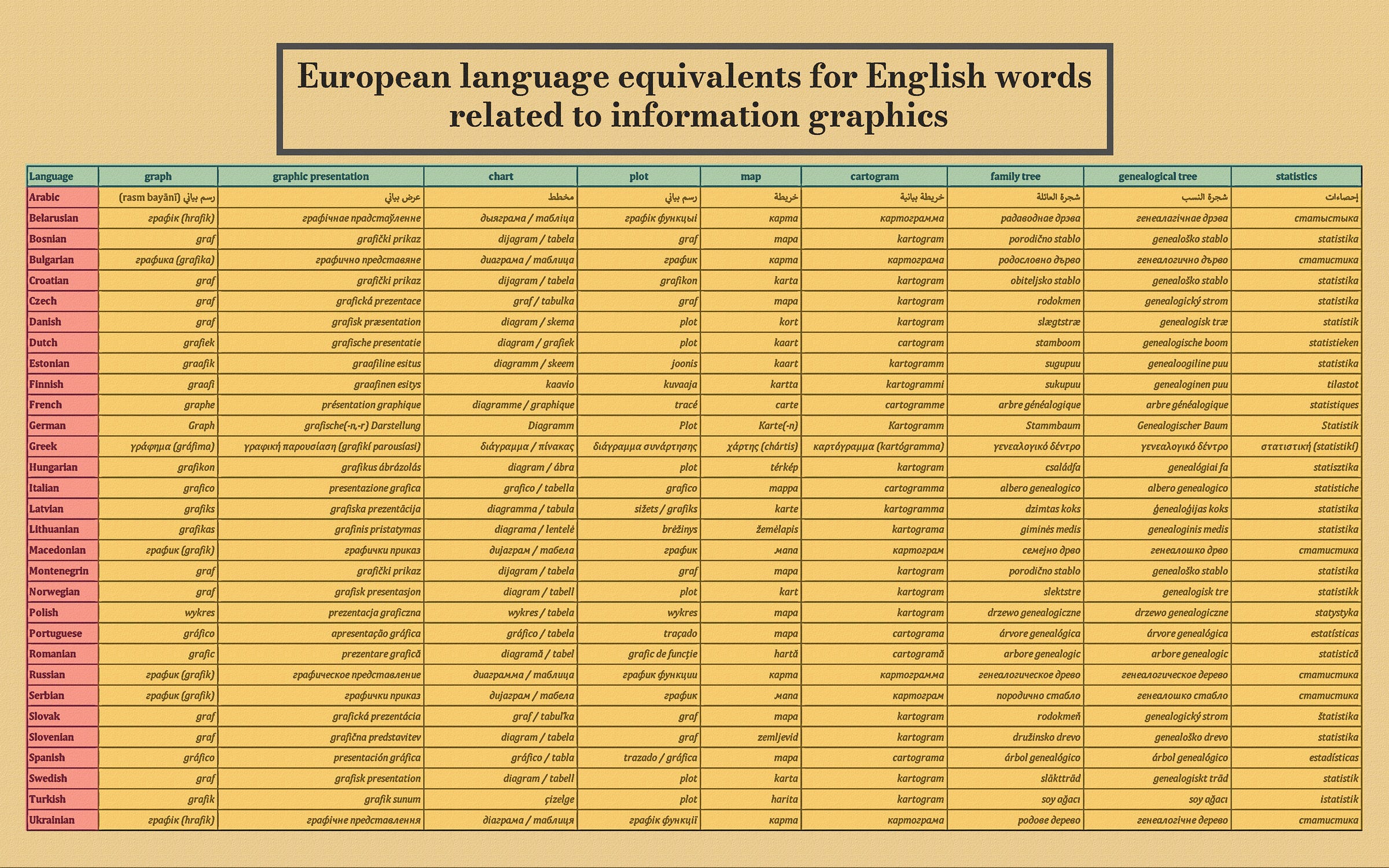How do you search for "chart" in Finnish or Polish?
A modest aid for those who want to search for old dataviz in languages other than English.
This article is the first part of a series on practical questions regarding the research and study of old dataviz, which you can access from the frontpage under the Cabinet’s toolbox tag.
In one of my earlier posts, I already wrote that I recommend searching for words related to information graphics in languages other than English. When you search in national, or even subnational-level archives, libraries, and museum databases (there are hundreds of them) in different countries, you will often find that there are very few bilingual/trilingual (local and English, French or German) search options. And even in cases where such options are available, it often happens that English searches return fewer, or other results than searches in the local language. This is even the case for transnational digital aggregators such as Europeana.1
This is why I have compiled a glossary, currently only for European languages2, showing how to write words such as graph, diagram, or map in the given language. Of course you can combine these words, especially with the prefix “statistical.” This list could be expanded with additional words, and there are cases where even these do not yield results, because local archivists and museologists either do not label these artefacts or use other words.
Regardless, I can say that it really works! I don’t want to spoil the surprises, but everyone will see the results in the coming weeks and months. You can reach depths you never thought possible.
You can browse and download the table in .csv and html from here: LINK
This glossary has obvious limitations. We must take into account that 100-150 years ago, the creators of maps and visualizations used different words or spellings. For example, in Hungarian, the word diagram appeared in the forms diagramm and diagramma 150 years ago. The English word graph was written in several ways: graphikon, graficon, gráf instead of the grafikon used today. We also have to pay attention to the singular and plural forms and various conjugations. The German singular Karte returns different results than plural Karten. Similarly, the results will be different if we write graphischen or graphischer instead of graphische. In many countries in the 18th and 19th centuries, the second language of science was German or French (not English!). So, when browsing through for example Romanian, Hungarian, or Polish archives, it may well be worth searching using German and French words as well. Finally, we should be prepared for the fact that, although archival documentation (including: labelling, tagging, description) of cartographic works is traditionally good, this is unfortunately not necessarily true for other information graphics, like diagrams, charts, graphs, statistical images, etc. This makes them harder to find.
If something is incorrect in the table, there is a typo, or other words are used in your language, please write me a message!
I will write about the use of digital archives and libraries and my experiences with them in another post.
Arabic is included because in many countries, for example under Ottoman rule, Turkish-Arabic was also an official language, thus archives and libraries hold documents and graphics in Arabic too.




